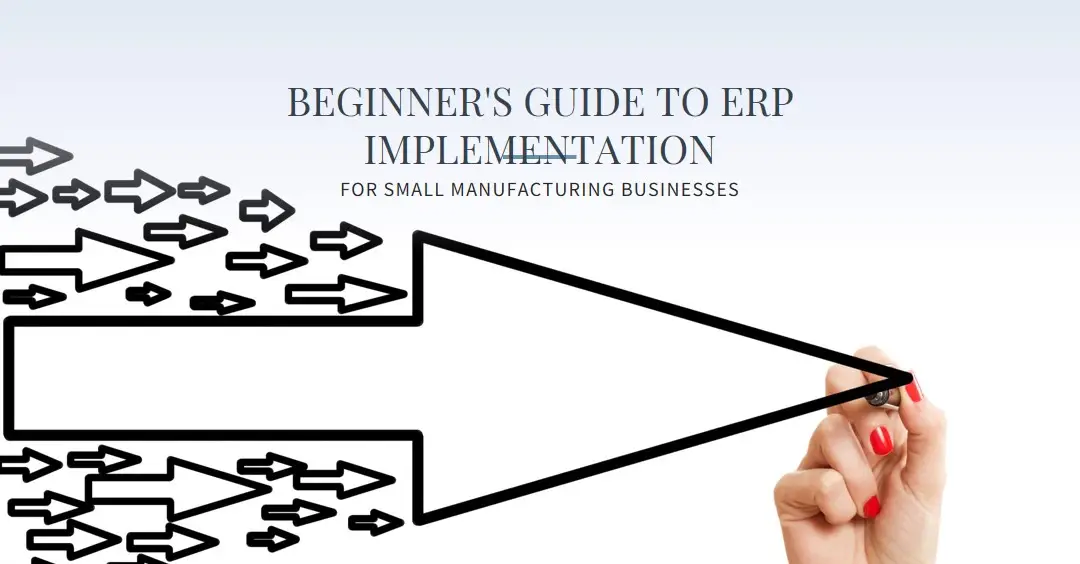
Introduction
In today’s fast-paced manufacturing industry, small businesses are increasingly turning to Enterprise Resource Planning (ERP) systems to streamline their operations, boost productivity, and stay competitive. But what exactly is ERP, and why is it so crucial for small manufacturing businesses? Learn more about ERP implementation for manufacturing companies.
Understanding ERP Systems
Definition and Key Features
ERP stands for Enterprise Resource Planning. It’s a software platform that integrates various business processes, including inventory management, accounting, human resources, and customer relationship management, into a single unified system. Key features of ERP systems include real-time data access, automation of routine tasks, and comprehensive reporting tools.
Different Types of ERP Systems
ERP systems come in various forms, each tailored to different business needs. On-premise ERP systems are installed locally on a company’s servers, offering more control but requiring significant IT infrastructure. Cloud-based ERP systems, on the other hand, are hosted on remote servers and accessed via the internet, offering flexibility and scalability.
Benefits of ERP for Small Manufacturing Businesses
Enhanced Efficiency and Productivity
One of the most significant benefits of ERP systems is their ability to enhance efficiency and productivity. By automating routine tasks and providing real-time data access, ERP systems allow employees to focus on more strategic activities, thus boosting overall productivity.
Better Decision Making
With centralized data and powerful analytical tools, ERP systems provide business leaders with valuable insights into their operations. This improved visibility aids in making informed decisions that can drive growth and profitability.
Improved Customer Satisfaction
ERP systems streamline order processing and inventory management, ensuring that customer orders are fulfilled accurately and promptly. This reliability translates to higher customer satisfaction and loyalty.
Cost Savings
While the initial investment in an ERP system can be significant, the long-term cost savings are substantial. By reducing inefficiencies and minimizing errors, ERP systems help businesses save on operational costs.
Challenges in ERP Implementation
Common Obstacles
Implementing an ERP system is not without its challenges. Common obstacles include high initial costs, resistance to change from employees, and potential disruptions during the transition period.
How to Overcome Them
To overcome these challenges, it’s essential to plan meticulously, involve all stakeholders from the outset, and provide comprehensive training to employees. Additionally, choosing the right ERP system tailored to your specific business needs can significantly mitigate these issues.
Steps to Successful ERP Implementation
Pre-Implementation Planning
Assessing Business Needs
Before implementing an ERP system, it’s crucial to assess your business needs thoroughly. Identify the pain points in your current processes and determine what you aim to achieve with an ERP system.
Setting Clear Objectives
Clear objectives are the backbone of a successful ERP implementation. Define what success looks like for your business and set measurable goals to track your progress.
Budgeting and Resource Allocation
Allocate sufficient budget and resources for the ERP implementation project. This includes not only the cost of the software but also expenses related to training, data migration, and ongoing support.
Choosing the Right ERP System
Evaluating Different ERP Vendors
Research and evaluate different ERP vendors based on your business requirements. Consider factors like industry experience, customer reviews, and the level of support they offer.
Considering Customization Options
Customization is key to ensuring that the ERP system meets your specific business needs. Evaluate the customization options available and choose a system that offers the flexibility to adapt to your processes.
Implementation Phase
Data Migration and Management
Data migration is a critical step in ERP implementation. Ensure that data is accurately transferred from existing systems to the new ERP system. This may involve data cleansing and validation to prevent errors.
System Configuration and Customization
Configure and customize the ERP system to align with your business processes. This may involve setting up workflows, defining user roles, and integrating with other software systems.
User Training and Support
Comprehensive user training is essential for a smooth transition. Provide employees with the necessary training and resources to use the ERP system effectively. Ongoing support is also crucial to address any issues that arise post-implementation.
Post-Implementation
Continuous Monitoring and Improvement
ERP implementation doesn’t end with the go-live date. Continuous monitoring and improvement are necessary to ensure the system continues to meet your business needs. Regularly review system performance and make necessary adjustments.
Handling Technical Issues
Be prepared to handle technical issues that may arise post-implementation. Having a dedicated support team in place can help address problems quickly and minimize disruptions.
Best Practices for ERP Implementation
Involving Stakeholders
Involve key stakeholders from the beginning to ensure buy-in and support throughout the implementation process. This includes top management, department heads, and end-users.
Maintaining Clear Communication
Clear communication is vital for successful ERP implementation. Keep all stakeholders informed about project progress, challenges, and milestones.
Regularly Updating the System
Regular updates and maintenance are essential to keep the ERP system running smoothly and securely. Ensure that you stay on top of software updates and implement new features as they become available.
Conclusion
ERP implementation can be a game-changer for small manufacturing businesses, offering numerous benefits such as enhanced efficiency, better decision-making, improved customer satisfaction, and cost savings. By understanding the challenges and following a structured implementation process, businesses can successfully integrate ERP systems and drive growth.

